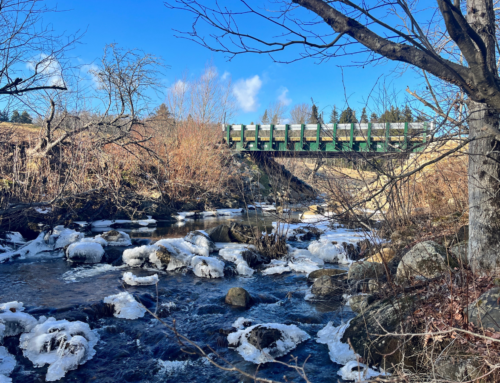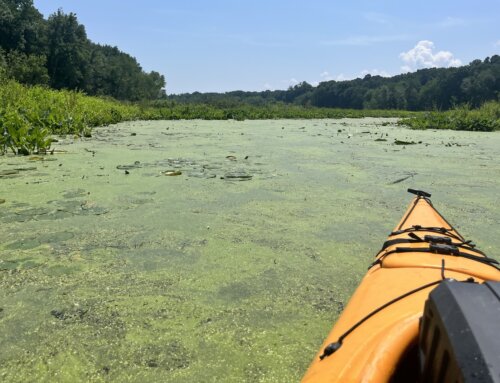Greenfield, MA – For the last 25 years, the Connecticut River Conservancy (CRC) has coordinated the annual Source to Sea Cleanup across four states, targeting trash-ridden sites and equipping volunteers with the tools needed to get the job done. September 24 – 26 marks the next event as thousands of volunteers take to the rivers to clean up all kinds of preventable litter. Anyone interested in getting dirty for cleaner rivers can get more information and register at www.ctriver.org/cleanup.
Last year, Source to Sea Cleanup volunteers removed over 10,000 beverage containers, more than 900 tires, and approximately 35 tons of trash from in or near rivers. As the annual Cleanup approaches its 25th anniversary, reflecting on the source of this pollution is as important as the solution. CRC continues to advocate for solutions to the persistent problem of trash pollution, particularly plastics and tires. “After cleaning up 1,202 tons of trash over the past 24 years it’s clear that repeated cleaning is not the solution to our trash problem,” says CRC Executive Director Andrew Fisk. “Consumers need to avoid single-use items. And it’s time for the businesses who created and have been profiting from this trash to now help solve the problem through fundamental redesign of how our products are made and disposed of.”
Plastic Advocacy
In Massachusetts, two plastic-prevention bills are in the works that would prohibit polystyrene (a.k.a. Styrofoam) and expand the existing Bottle Bill to place a deposit on alcoholic nip bottles and other smaller plastic containers. “While including a deposit on nips is a direct incentive to return them, it does not solve the complications of processing and recycling these small plastic bottles,” said Andrea Donlon, CRC’s river steward for Massachusetts.
“Despite the fact that recycling is pretty widely available in western Massachusetts we still see dumping and littering,” Donlon said. “There’s a particular need to rethink packaging because we keep finding plastic beverage containers, wrappers, and food-related waste.”
Recycling costs have increased considerably since 2018, according to the Conservation Law Foundation, when China stopped accepting plastics, glass, and other recyclables from the United States. Since then, more recyclables have been diverted to landfills.
USA Waste & Recycling and All American Waste are two of the Lead Source to Sea Cleanup sponsors and organize their own employee volunteer groups, too. “We look forward to sponsoring and participating in the Source to Sea cleanup event every year and know first-hand that proper waste disposal is important to keep our rivers and communities clean,” says Frank M. Antonacci, COO of USA Waste & Recycling.
Preventing plastics from reaching our rivers also stems the flow of an invisible pollutant: microplastics. Found worldwide in our water, food, and environment, microplastics form when plastic begins breaking down in water and cause yet-to-be-known effects to our health.
In August, CRC began the first-ever microplastics monitoring program on the Connecticut River with volunteers taking samples from over a dozen locations. This program follows CRC’s “Swap Your Dock” campaign that began two years ago focusing on the microplastic pollution caused by unenclosed and decaying foam used on old floating docks.
“Chunks break off, animals will burrow holes in the docks and live in them and all of the degrading polystyrene flows down the river,” said Kathy Urffer, CRC’s river steward for Vermont and New Hampshire.
In 2019 Vermont passed a statewide ban on single-use plastics and polystyrene containers, and is now looking to expand their existing bottle bill to include nips. New Hampshire does not have a bottle bill, and the last time the state tried passing one was in 2011, Urffer noted.
“The bottom line is people should be switching to compostable materials and packaging,” Urffer said. “Or glass and metal – things that can actually be recycled or reused.”
Tired of Tires
Meanwhile, Connecticut has taken the lead looking at an “extended producer responsibility” (EPR) bill to make tire manufacturers responsible for tire disposal and recycling, too. Source to Sea Cleanup volunteers collected over 946 tires during last year’s Cleanup, emphasizing the extent of this problem. EPR programs lead to free, easy disposal of items such as tires, paint, mattresses, electronics, and batteries. Free disposal eliminates the incentive for illegal dumping. EPR programs have been successful across the country and the world to turn waste into a reusable commodity. These programs also include advanced market development, which can increase the value of post-consumer materials and provide opportunities for economic development.
CRC partners with Bridgestone’s Tires4Ward program to collect and dispose of tires collected during the Source to Sea Cleanup. The company collects truck loads of tires to be used for rubber flooring, playground surfaces, modified asphalt, and other civil engineering applications.
#RiverWitness
“You can help show the problem to help solve the problem,” says Stacey Lennard, CRC’s Cleanup coordinator. “Take a photo, video, or make art inspired by river beauty or river pollution. Get creative, use #RiverWitness, and tag CRC on social media.”
As they countdown to the Cleanup, CRC will be sharing challenges, giveaways and helpful tips posted each day on their social media channels. You can join the fun by posting photos, videos or original art that illustrates your love for the river with the hashtag #RiverWitness. Select images will be used to further CRC’s advocacy work around trash reduction and environmental protection. Submit your photos to CRC on Facebook @connecticutriver, Instagram at @ctriverconservancy or Twitter at @CTRiverH2Oshed.
“Show decision-makers this is important to you. Speak up for your rivers,” says Lennard. Cleanup volunteers will be using the CleanSwell smartphone app, developed by the Ocean Conservancy, to tally this year’s trash. These tallies are important for CRC’s work because they show the scope of the trash problem and focus solutions where they’re needed most.
About Connecticut River Conservancy
Since 1952, Connecticut River Conservancy has been the voice for the Connecticut River watershed, from source to sea. They collaborate with partners across four states to protect and advocate for your rivers and educate and engage communities. They bring people together to prevent pollution, improve habitat, and promote enjoyment of your river and its tributary streams. Healthy rivers support healthy economies. To learn more about CRC, or to make a contribution to help protect your rivers, visit www.ctriver.org.
###







